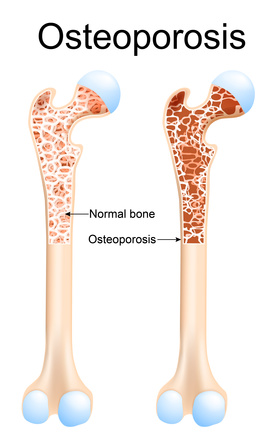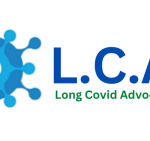
Long Covid Advocacy Ireland – Functional Medicine Testing Webinar
July 19, 2025
Fertility, Menopause, and the Vaginal Microbiome: A Life Course View of Bacterial Vaginosis
July 21, 20255 Things You Can Do Right Now To Protect Your Bone Health
When we think of bone loss, we often picture a frail, elderly woman. But the truth is, bone loss begins much earlier—typically in our mid-30s. In fact, recent research shows that a woman’s lifetime risk of an osteoporotic fracture is equal to her combined risk of breast, uterine, and ovarian cancer. That’s the bad news. 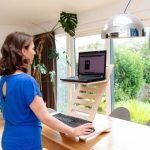
The good news? You can take powerful steps to slow down bone loss—beyond the usual advice of “lift heavy weights” and “take calcium.” A holistic, movement-based approach (the same one I used to reverse my osteopenia without bone loss medication) can make a real difference. It’s never too late to start, but the best time to take action is between the ages of 35 and 45, before perimenopause accelerates the process.
Here are five simple, effective strategies you can put into practice today—no gym membership or dumbbells required.
1. Sit Less
We’ve all heard that too much sitting is bad for our health—but it’s especially damaging to your bone health. Bone is living tissue, constantly renewing itself, but it needs mechanical stimulation to do that. Sitting removes that stimulus.
Thankfully, sitting less doesn’t mean you have to schedule in long workouts. It just means moving more during your regular day:
- Stand for part of your Zoom calls or while taking phone calls.
- Do your emails standing up.
- Park farther from your destination and walk the rest.
- Take a short standing or walking break every hour.
Stand while doing household chores like ironing.
Every small movement counts. Swap out some of your sitting time—you’ll be surprised at how much it adds up. Get more inspiration here.
2. Sit Better
Posture matters. Slouching compresses your spine and weakens your bones over time. But even the best sitting posture tends to fade when you’re in a typical backward-sloping chair.
Try this instead:
Tilt your seat slightly forward—about 10 degrees—to support an upright position. You can buy a wedge cushion or make your own with a rolled towel placed near the back of your chair (but not touching the backrest). Use this on all your chairs—office, dining, piano bench—and you’ll improve your posture effortlessly throughout the day.
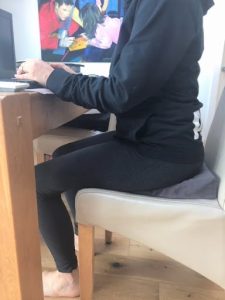
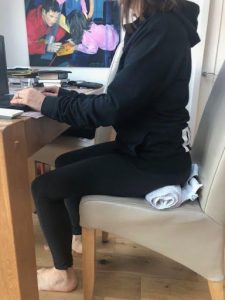
No need for constant reminders or willpower—it becomes automatic.
3. Sit Differently
When you do need to sit, vary how you do it. Variety is essential for bone and joint health.
Rotate through different sitting options:
- Use a yoga ball
- Sit on a stool without a backrest
- Try a low stool or ottoman
- Sit on the floor with cushions or a bolster
Not only does this help build strength and mobility, it also improves your ability to get up and down from the floor—a highly underrated skill that directly supports hip and spine health.
4. Ditch the Heels (and Most Shoes)
Heels may look great, but they wreak havoc on your alignment. They push your chest forward, your butt back, and misalign your hips—all while increasing pressure on your lower back. Even lower-heeled everyday shoes can subtly do the same.
Start weaning off heels gradually:
- Choose lower-heeled shoes
- Go barefoot at home when possible
- Transition slowly to minimal/barefoot shoes or flat footwear
Your hips (and bones) will thank you.
5. Take a Break
Chronic stress causes elevated cortisol levels, which can lead your body to leach calcium from your bones—even if your diet and exercise are on point.
One powerful way to reduce stress and decompress your spine is with “constructive rest”:
Lie on your back on the floor with knees bent. You may need a pillow under your head to keep your neck neutral. Stay there for five minutes, breathing deeply. Add some meditation or calming music if you like.
This isn’t laziness—it’s purposeful rest, and it’s a gift to both your bones and your mental health. Now, which one of these tips could you start implementing right away?
This wonderful guest blog was written by Annette Cashell.
Annette is a Holistic Movement Coach with over 20 years of teaching experience. Ex-corporate and previous “active couch potato,” she avoided a neck fusion operation through natural movement and now combines her expertise in Pilates and movement to help women get rid of pain and build bone health with corrective exercises and environmental changes. She is constantly amazed at the body’s ability to heal itself once given the space and guidance to do so. “Exercise is optional; movement is essential.” Subscribe to her newsletter to get 5 Essential Exercises for Strong Bones or schedule your free Discovery Call.
